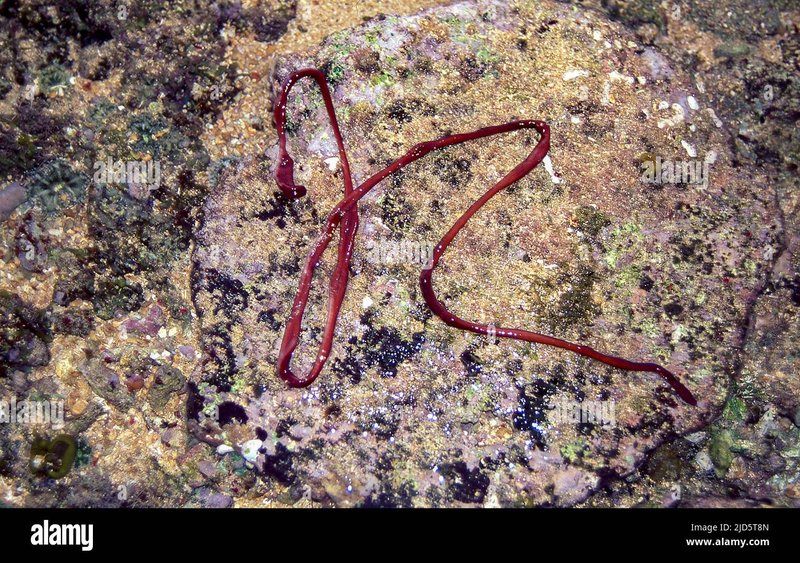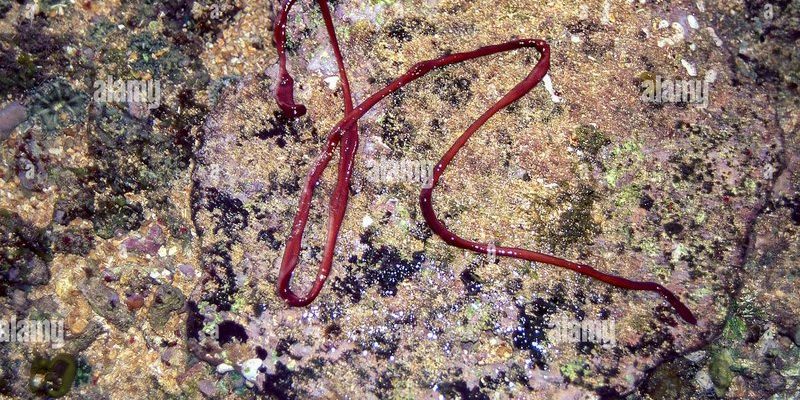
Ribbon worms, which belong to the phylum Nemertea, are incredibly diverse and can vary widely in size and color. With over a thousand species identified so far, they come in various shapes—from slender and elongated to thicker and more robust. Honestly, if you’re looking to dive into marine life observation, knowing how to identify ribbon worms can add an exciting twist to your coastal adventures. So, grab a pair of binoculars and some curiosity—let’s dive into the world of ribbon worms!
What Are Ribbon Worms?
You might be wondering what exactly ribbon worms are. They are soft-bodied invertebrates found in marine environments around the world. Most commonly, they inhabit coastal regions, living in rocky pools, sandy shores, and even in the mud of estuaries. Think of them as the quiet, less flashy cousins to more well-known sea creatures like crabs or starfish.
Ribbon worms have a unique body structure, characterized by a long, segmented shape. They possess a proboscis, a specialized feeding structure that can extend outwards to catch prey. This proboscis often has a sticky or spiny surface, which helps the worm snag unsuspecting small fish or other marine creatures. If you see a long, slender creature darting quickly, it could be a ribbon worm making a breakfast run!
Why Should You Care About Ribbon Worms?
So, why go through the trouble of identifying ribbon worms? For one, they play a significant role in marine ecosystems. Ribbon worms help keep populations of small invertebrates in check and are a vital part of the food chain. They are prey for larger animals, including fish and birds. Understanding their role can give us insights into the health of coastal ecosystems, which is especially important as we face changes in climate and pollution.
Plus, observing ribbon worms can be a delightful experience! They often come in beautiful colors—ranging from deep purples to vibrant greens—making them an alluring sight in rock pools. This adds an extra layer of excitement for coastal explorers. Imagine spotting a bright ribbon worm while hunting for cool sea glass or shells. It’s all part of the adventure!
Identifying Ribbon Worms: Key Characteristics
Ribbon worms aren’t just long; they have several traits that make them stand out. Here are some key characteristics to keep an eye on:
- Body Shape: Ribbon worms are elongated and often appear flat, resembling a slim, flexible ribbon. They can be quite long, with some species reaching several feet in length!
- Coloration: They come in various colors, including bright greens, reds, yellows, and browns. Some even have stripes or blotches. This vibrant coloration can help you identify different species.
- Proboscis: One of the most distinctive features is their proboscis. When threatened or in motion, this can be everted, or turned inside out, so it often looks like a long extension out of their bodies.
Next time you’re at the beach, keep these features in mind. If you see a long, flat worm with a lively color palette, chances are you’ve spotted a ribbon worm!
Where to Find Ribbon Worms
If you’re eager to observe ribbon worms in their natural habitat, rock pools are your best bet! Here’s how to find them:
1. **Timing:** Visit during low tide when the rock pools are exposed. This will give you the best chance to see various marine life, including ribbon worms.
2. **Location:** Look in rocky areas, especially where there’s plenty of seaweed or debris. Ribbon worms often hide under rocks or in crevices, so a gentle lift of a rock or a careful search can reveal some fascinating creatures.
3. **Water Conditions:** Warm, shallow waters tend to be more productive for ribbon worms. If the water is too cold or polluted, you might not spot any.
Rock pooling is like a treasure hunt—you never know what you might discover! Just remember to tread lightly and return any rocks you move to their original place.
Handling Ribbon Worms: Do’s and Don’ts
If you’re lucky enough to spot a ribbon worm, you might be tempted to touch it or take a closer look. Here are some important do’s and don’ts:
- Do: Observe them carefully without disturbing their environment. Use a small container if you want to examine a worm up close, but only for a short time.
- Don’t: Grab them roughly or pull them out of their hiding spots, as this can harm them or stress them out.
- Do: Learn about their habitat and behavior. The more you understand about ribbon worms, the more you’ll appreciate them.
- Don’t: Forget to wash your hands after handling anything from the beach. Some coastal organisms can be harmful if ingested.
By being respectful and cautious, you can ensure that both you and the ribbon worms have a positive experience.
Fun Facts About Ribbon Worms
Here are some tidbits that might surprise you about ribbon worms:
1. **Regeneration:** Did you know ribbon worms can regenerate? If they lose part of their body, they can regrow it! This amazing ability allows them to survive encounters with predators.
2. **Variability:** There’s a ton of diversity among species. Some ribbon worms can be just a few centimeters long, while others stretch several feet. They adapt to their environments in remarkably different ways.
3. **Predatory Nature:** Although they often use their proboscis to catch unsuspecting prey, some ribbon worms are scavengers. They’ll feast on decaying material, contributing to the ecosystem’s cleanup crew.
These fascinating aspects make ribbon worms truly unique members of the coastal community. The next time you’re near the beach, keep an eye out for these incredible creatures!
Identifying ribbon worms in coastal rock pools can be a rewarding experience. By learning about their features, habitats, and importance, you can enhance your understanding of marine ecosystems. Ribbon worms may seem like simple creatures, but they play significant roles in their environment.
So, the next time you head to the beach, remember to look beneath the rocks, explore the tide pools, and embrace the adventure that comes with discovering marine life. Who knows? You might just find a long, squiggly ribbon worm that adds a splash of excitement to your coastal jaunt! Happy exploring!

